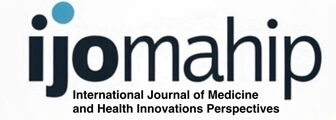The International Journal of Medicine and Health Innovations Perspectives (IJOMAHIP) is an open-access, peer-reviewed journal dedicated to advancing knowledge in the fields of Medicine and Health Sciences fostering innovation, facilitating global knowledge exchange, and supporting collaborative efforts among researchers, clinicians, educators, and healthcare practitioners worldwide.
Volume: 1 Issue: 2 (July - December 2025)
| No. |
Article Information |
| 1 |
Author(s):
Gio Marconi A. Balgue, Monica Elena A. Niedo, Theodore Dominic Credo, Rae Marco Fernandez.
Page No : 1-24
|
Knee Pain Among Spikeball Athletes and Their Relationship With Sex: A Basis for an Injury Prevention Protocol
Abstract
Spikeball, a growing sport blending volleyball and handball, attracts competitive and casual players. This study explored knee pain prevalence among 35 spikeball athletes (17 male, 18 female) to understand its relationship with sex and develop injury prevention strategies. The study used a cross-sectional, correlational research design that took a quantitative approach. Purposive sampling was used to gather respondents, and a self-made questionnaire was utilized, conducted both online and face-to-face. The Chi-squared test along with regression and frequency analysis revealed no significant relationship between knee pain and gender, but older women with higher BMI tended to be more prone to knee pain. Out of the thirty-five respondents, five reported knee pain after two months of play. The study emphasized the need for further research due to limited sample size, aiming to develop a more effective injury prevention protocol. Specific findings suggested that pre-game (warm-ups) and post-game (cooldowns) activities were associated with a lower likelihood of knee pain among spikeball athletes. KEYWORDS: spikeball, athletes, sex, knee pain, injury prevention protocol
| 2 |
Author(s):
Estrella, Fedelyn P. , Crudo, Alvin D. .
Page No : 25-47
|
Assessment of Biosafety Risks and Management Practices in Selected Medical Laboratory Science Schools in Calabarzon: Basis for Proposed Biosafety Standard Procedures for Schools
Abstract
Biosafety is vital in Medical Laboratory Science (MLS) programs to safeguard students, faculty members, and the community. This study assessed biosafety risks and management practices in MLS schools in CALABARZON as a basis for proposed standard procedures. A descriptive quantitative design utilizing a survey approach was conducted with 12 purposively selected MLS schools using a self-developed questionnaire to assess current practices and identify gaps. Data were analyzed through frequency counts, percentages, means, standard deviations, and analysis of variance (ANOVA). A proposed model of procedures was developed based on the findings of this assessment. The overall mean biosafety practice score was 3.98 (SD = 0.499), indicating moderately practiced biosafety practices. Out of 12 schools, 11 showed moderate biosafety implementation. ANOVA results revealed significant differences among schools, F(11,29) = 5.934, p < 0.001), indicating inconsistencies in adherence to protocols despite similar program requirements. Biosafety practices varied significantly, highlighting the need for standardized guidelines in academic laboratories to ensure safety and compliance. Further research using qualitative methods was recommended to gain a deeper understanding.
KEYWORDS: biosafety risks, management practices, Medical Laboratory Science School
